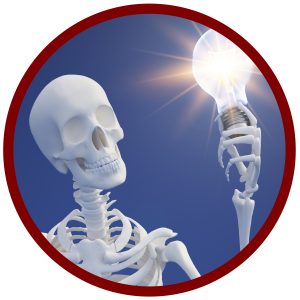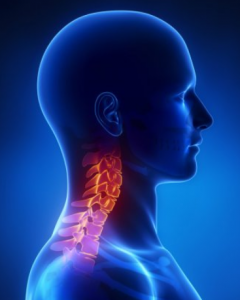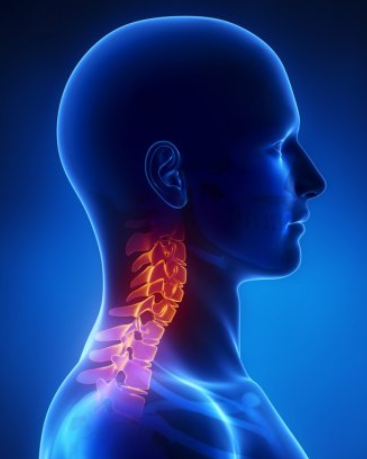

When are C-Spine Radiographs Needed?
When someone experiences a cervical spine trauma, extreme caution should be taken to determine if radiographs are needed. The Canadian Spine R ules and the NEXUS Spine Rules help the clinician address that concern. These “rules” establish an algorithm to follow to determine if radiographs are needed. Please notice, the “rules” do not determine if a fracture is present. The intent of the “rules” is to “recommend” (rules are positive) or “not recommend” (rules are negative) the performance of a radiograph. One should progress through each step of the algorithm and determine the clinician action.
ules and the NEXUS Spine Rules help the clinician address that concern. These “rules” establish an algorithm to follow to determine if radiographs are needed. Please notice, the “rules” do not determine if a fracture is present. The intent of the “rules” is to “recommend” (rules are positive) or “not recommend” (rules are negative) the performance of a radiograph. One should progress through each step of the algorithm and determine the clinician action.
Both of these “rules” are outlined below with the subsequent clinical decisions.
Canadian C-Spine Rules
Step 1 is the assessment of circumstances under which the Canadian Spine Rules should NOT be applied:
- No history of trauma
- Vital signs are unstable
- Acute paralysis
- Known vertebral disease
- Glasgow Coma Scale < 15
- < 16 years old
- Previous C-spine surgery
Step 2 is the assessment of high-risk factors. If any of the following are present, a radiograph is recommended:
- ≥ 65 years old or
- Paresthesias in extremities or
- Dangerous mechanisms:
- Fall from height ≥ 3’ (5 steps)
- Axial load to head (diving)
- MVA @ 100 mph, rollover, ejection
- ATV accident
- Bicycle collision
Step 3 is the assessment of low-risk factors. In this case, any no answers to the following questions should be referred for a radiograph:
- Ambulatory at any time or
- Delayed (no immediate) onset of pain or
- Absence of midline c-spine tenderness or
- Sitting position in ED or
- Simple rear-end MVA
- Pushed into traffic, hit by bus/truck
- Rollover
- Hit by high speed vehicle
Step 4 is the assessment of neck rotation. Can the individual actively rotate the neck 45 degree to both sides? If the answer is “no,” a radiograph is suggested.
So there are several possible ways this algorithm can result in the recommendation of a radiograph. A positive test includes any of the following outcomes:
- any high-risk factor requires a radiograph
- absence of any low-risk factors requires a radiograph
- presence of any low-risk factor & the inability to rotate the neck 45° to right or left requires a radiograph
Remember a positive test indicates a radiograph is recommended, not that a fracture is present! The statistical value of this test demonstrates it is an excellent screening tool (sensitivity = 90-100%) but a poor diagnostic tool (specificity = 1-77%). Fortunately, radiographs have a high specificity to complement the Canadian Spine Rules.
NEXUS Cervical Spine Criteria
The NEXUS spine criteria are also used to assess the need for a radiograph. The algorithm involves answering 5 questions.
- Midline neck tenderness?
- Sensory or motor deficits?
- Altered mental status?
- Evidence of intoxication?
- Painful distracting injuries, i.e. long bone fractures, large burns, large lacerations, visceral injuries?
If any of the answers to the questions is “yes,” the recommendation is to seek a radiograph to assess for the presence of a fracture. Like the Canadian Spine Rules, the NEXUS Criteria is a strong screening tool (sensitivity = 83-100%) but a weak diagnostic tool (specificity = 2-46%). Again, radiographs have a high specificity to complement the NEXUS Rules.
The most common criticism is of the Spine Rules is the difficulty to memorize the multiple criteria. However, the availability of mobile apps has put this information right at your fingertips. Both of these spine rules are included in iOrtho+ Premium Mobile App. The steps are sequentially provided to walk the clinician through the decision making process.
For more cutting edge orthopedic information in iOrtho+ Premium Mobile App, please visit https://iortho.xyz/
- Gulick DT. iOrtho+ Mobile App. DTG Enterprises LLC. 2020
- Gulick, DT. OrthoNotes, 4th FA Davis Publishing, Philadelphia. 2018
- Michaleff ZA, Maher CG, Verhagen AP, Rebbeck T, Lin CW. Accuracy of the Canadian C-spine rule & NEXUS to screen for clinically important cervical spine injury in patients following blunt trauma: a systematic review. Canadian Medical Association Journal. 2012;184(16):E867-876
- Stiell IG, Clement CM, McKnight RD, Wells GA, Brison R, Schull M, Rowe B, Worthington J, Eisenhauer M, Cass D, Greenberg G, MacPhail I, Dreyer J, Lee J, Bandiera G, Reardon M, Holroyd B, Lesiuk H. Comparative Validation of the Canadian C-Spine Rule & the NEXUS Low-Risk Criteria in Alert & Stable Trauma Patients. New Engl J Med 2003;349(26):2510-2518.
